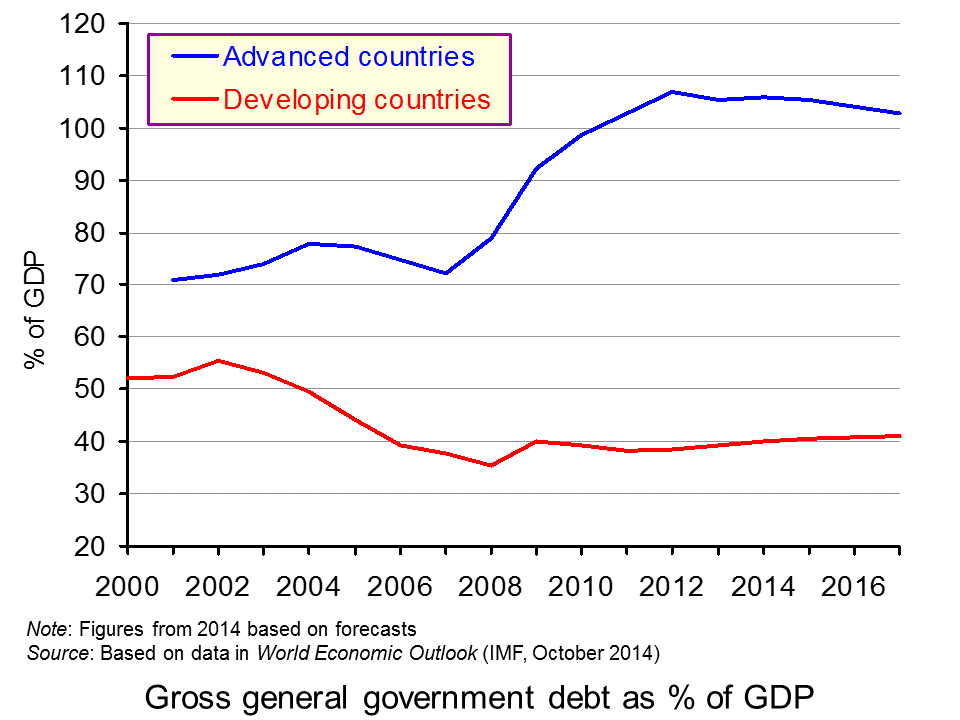Deeper in debt
 ‘The world is sinking under a sea of debt, private as well as public, and it is increasingly hard to see how this might end, except in some form of mass default.’ So claims the article below by Jeremy Warner. But just how much has debt grown, both public and private? And is it of concern?
‘The world is sinking under a sea of debt, private as well as public, and it is increasingly hard to see how this might end, except in some form of mass default.’ So claims the article below by Jeremy Warner. But just how much has debt grown, both public and private? And is it of concern?
The doomsday scenario is that we are heading for another financial crisis as over leveraged banks and governments could not cope with a collapse in confidence. Bank and bond interest rates would soar and debts would be hard to finance. The world could head back into recession as credit became harder and more expensive to obtain. Perhaps, in such a scenario, there would be mass default, by banks and governments alike. This could result in a plunge back into recession.
The more optimistic scenario is that private-sector debt is under control and in many countries is falling (see, for example, chart 1 in the blog Looking once again through Minsky eyes at UK credit numbers for the case of the UK). Even though private-sector debt could rise again as the world economy grows, it would be affordable provided that interest rates remain low and banks continue to build the requisite capital buffers under the Basel III banking regulations.
 As far as public-sector debt is concerned, as a percentage of GDP its growth has begun to decline in advanced countries as a whole and, although gently rising in developing and emerging economies as a whole, is relatively low compared with advanced countries (see chart). Of course, there are some countries that still face much larger debts, but in most cases they are manageable and governments have plans to curb them, or at least their growth.
As far as public-sector debt is concerned, as a percentage of GDP its growth has begun to decline in advanced countries as a whole and, although gently rising in developing and emerging economies as a whole, is relatively low compared with advanced countries (see chart). Of course, there are some countries that still face much larger debts, but in most cases they are manageable and governments have plans to curb them, or at least their growth.
But there have been several warnings from various economists and institutes, as we saw in the blog post, Has the problem of excess global debt been tackled? Not according to latest figures. The question is whether countries can grow their way out of the problem, with a rapidly rising denominator in the debt/GDP ratios.
Only mass default will end the world’s addiction to debt The Telegraph, Jeremy Warner (3/3/15)
Questions
- What would be the impact of several countries defaulting on debt?
- What factors determine the likelihood of sovereign defaults?
- What factors determine the likelihood of bank defaults?
- What is meant by ‘leverage’ in the context of (a) banks; (b) nations?
- What are the Basel III regulations? What impact will they have/are they having on bank leverage?
- Expand on the arguments supporting the doomsday scenario above.
- Expand on the arguments supporting the optimistic scenario above.
- What is the relationship between economic growth and debt?
- Explain how the explosion in global credit might merely be ‘the mirror image of rising output, asset prices and wealth’.
- Is domestic inflation a good answer for a country to the problems of rising debt denominated (a) in the domestic currency; (b) in foreign currencies?